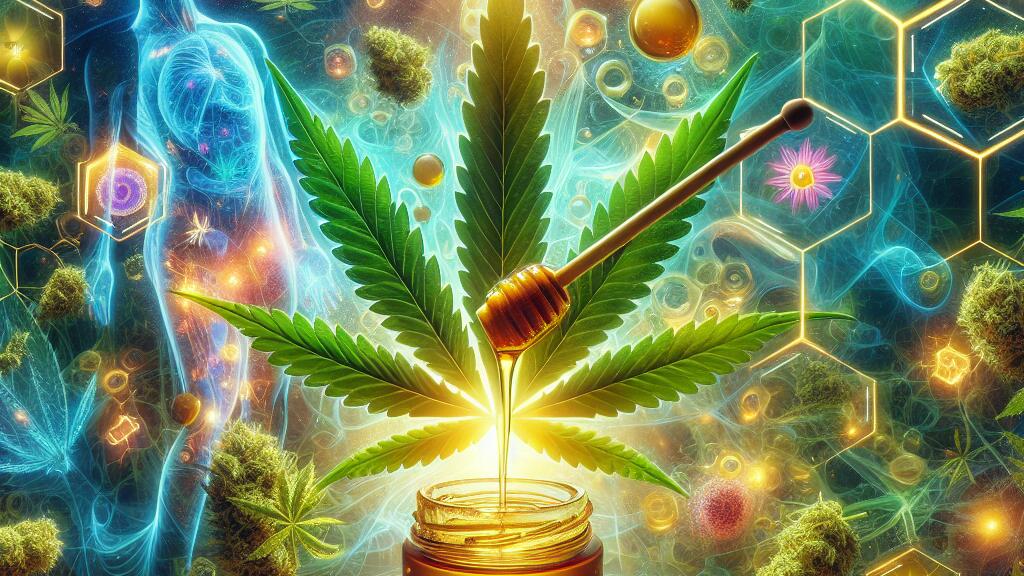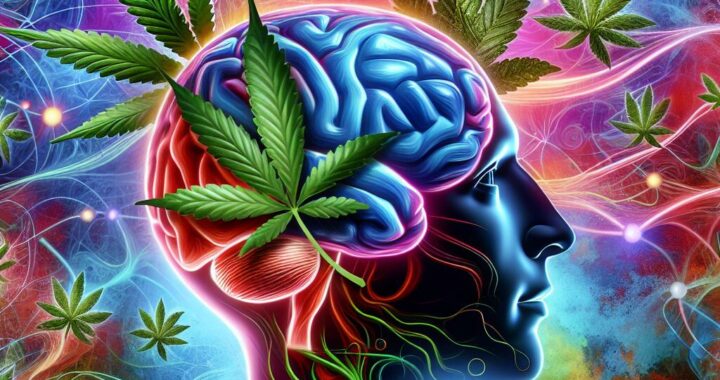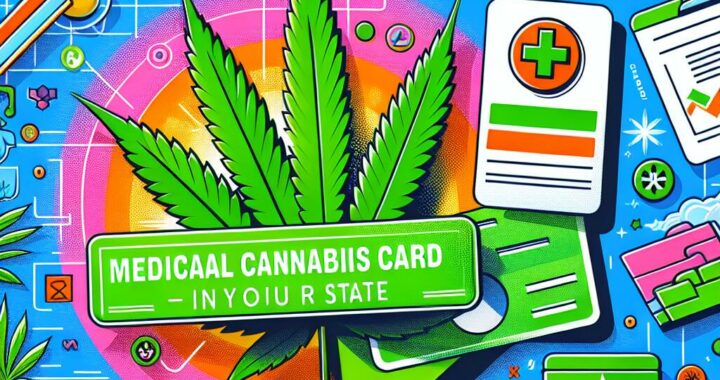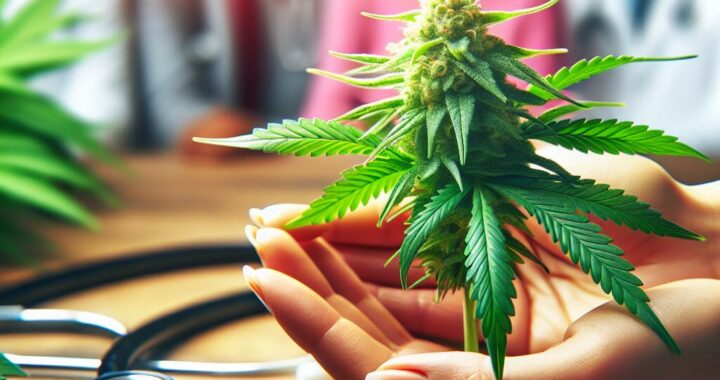Exploring the Health Benefits of Medical Marijuana
10 min read
The landscape of medical marijuana has seen a notable surge, captivating the attention of patients on the hunt for alternative therapies to address an array of ailments. Whispers from anecdotal tales and nascent research hint at cannabinoids wielding the power to ease the burdens of chronic pain, anxiety, and certain neurological disorders. This potential stems from how cannabinoids engage with our endocannabinoid system—a fascinating network that orchestrates pain modulation, mood stabilization, and overall balance within our bodily ecosystem.
Diving deeper into this realm reveals that medical marijuana might shine particularly bright in alleviating symptoms linked to conditions like multiple sclerosis, epilepsy, and the relentless grip of cancer-related pain. An expanding trove of evidence underscores its promise as a complementary ally alongside traditional pharmacological interventions. Yet, as we stand on this precipice of discovery, continuous investigation through clinical trials is paramount; it’s here we’ll truly unravel the vast tapestry woven by cannabis-based treatments—its health benefits waiting just beyond our grasp.
Pain Relief and Management
Medical marijuana has burst onto the scene, capturing the spotlight for its intriguing potential to ease chronic pain—a plight that plagues millions. The cannabinoids, those dynamic compounds nestled within marijuana’s leafy embrace, engage in a fascinating dance with our body’s endocannabinoid system. This intricate network is pivotal in modulating how we perceive pain. Research hints at the possibility that both THC (tetrahydrocannabinol) and CBD (cannabidiol) can deftly alter pain signals, offering a compelling alternative to conventional pain relief methods—especially for conditions like arthritis, neuropathy, and fibromyalgia.
For patients on the hunt for natural pathways to alleviate their suffering, medical marijuana presents an enticing option; it often carries a perceived lower risk of addiction when stacked against opioid-based treatments. Studies reveal a tapestry of benefits: many individuals not only experience significant reductions in pain but also enjoy better sleep quality and an enhanced sense of overall well-being upon integrating medical marijuana into their therapeutic arsenal. However—and this is crucial—the decision to venture into cannabis as a means of managing pain should always unfold under the guidance of healthcare professionals. This ensures that personalized and safe treatment strategies are crafted specifically for each individual’s unique circumstances.
| Condition Treated | Primary Cannabinoid | Potential Benefits | Dosage Form |
|---|---|---|---|
| Arthritis | THC | Pain relief, reduced inflammation | Oil, tinctures, edibles |
| Neuropathy | CBD | Reduced nerve pain, improved sleep | Topical creams, capsules |
| Fibromyalgia | THC & CBD | Overall pain reduction, enhanced mood | Vapor, oils, edibles |
| Chronic Pain | THC | Improved pain management, better sleep quality | Edibles, oils, capsules |
The Role of Cannabinoids
Cannabinoids—those fascinating compounds—are at the heart of what makes medical marijuana a powerhouse in therapeutic applications. They tango with our body’s endocannabinoid system, a complex network that deftly regulates a multitude of physiological processes: pain perception, mood swings, appetite cravings—the list goes on. Among these cannabinoids, THC (tetrahydrocannabinol) and CBD (cannabidiol) stand out like stars in the night sky, each casting its own unique glow. THC is the wild one; it’s responsible for the euphoric highs often linked to cannabis use. In contrast, CBD plays it cool, celebrated for its potential anti-inflammatory and anxiety-reducing effects—a calming force amid chaos. This distinction? Absolutely vital for patients hunting down targeted therapeutic relief.
But wait! The pharmacological wonders of cannabinoids stretch far beyond mere pain alleviation. Research is bubbling over with findings suggesting these compounds might also have a hand in tackling issues like anxiety disorders, epilepsy episodes, and even symptoms stemming from multiple sclerosis. By peeling back the layers on how cannabinoids engage with receptors nestled within our brain and body, we arm healthcare professionals with insights necessary to customize treatments tailored to individual needs. As fascination surrounding medical marijuana continues to swell like an ocean tide, ongoing studies are diving deeper into uncovering both benefits and potential applications of these remarkable cannabinoids across diverse medical landscapes—opening up promising pathways for groundbreaking therapeutic innovations just waiting to be discovered!
Key Compounds in Medical Marijuana
Cannabinoids—the intriguing, primary active compounds of medical marijuana—are the stars of this therapeutic stage. At the forefront, we find tetrahydrocannabinol (THC) and cannabidiol (CBD), two heavyweights that have garnered significant attention and extensive research. THC is the mischievous trickster behind the psychoactive effects linked to marijuana’s allure, while CBD steps in as a calming counterpart, delivering an array of health benefits without that intoxicating haze.
But wait! The story doesn’t end there. This botanical marvel also boasts a variety of other cannabinoids and terpenes swirling within its green embrace, each contributing to its overall potency. Take cannabigerol (CBG) and cannabichromene (CBC)—they may not steal headlines like THC or CBD, but these lesser-known cannabinoids are bubbling with potential for therapeutic breakthroughs.
And let’s not overlook terpenes! These aromatic gems found throughout nature infuse medical marijuana with distinct scents and flavors; yet their role goes beyond mere fragrance—they too influence how cannabis interacts with our bodies. Herein lies the fascinating concept known as the entourage effect: a harmonious interplay where various components unite to amplify one another’s properties. This intricate web underscores just how complex medical marijuana truly is—and why it’s crucial to explore its full spectrum when assessing therapeutic possibilities.
Risks and Side Effects
The landscape of medical marijuana is fraught with potential pitfalls and side effects that demand a nuanced approach. Picture this: dizziness, an unquenchable dry mouth, and shifts in cognitive clarity—especially for those venturing into this realm for the first time. The specter of long-term use looms large, as some may find themselves ensnared by dependence, inching toward the precarious edge of substance use disorders.
But wait! There’s more to consider—the kaleidoscope of individual responses to cannabinoids can throw a wrench into even the most carefully constructed treatment plans, underscoring the necessity for vigilant oversight from healthcare professionals.
And yes, let’s not overlook the darker shadows; some users might face intensified mental health challenges like anxiety or paranoia lurking just around the corner. The interplay between specific strains and dosages? It’s no trivial matter—it can dramatically sway both intensity and type of these unwelcome side effects. Hence, delving deep into a patient’s medical past alongside their present health condition becomes paramount in mitigating risks tied to marijuana consumption.
In this intricate dance between patient safety and effective therapy, robust dialogues between patients and their healthcare providers emerge as vital lifelines—these conversations are far from mere formalities; they’re essential for navigating safe pathways through this complex terrain of medicinal cannabis use.
Understanding the Possible Adverse Effects
While medical marijuana presents a myriad of therapeutic benefits, it’s crucial to cast a discerning eye on the potential downsides that can accompany its use. Patients might find themselves grappling with short-term side effects like dizziness, that pesky dry mouth, or even shifts in cognitive clarity. These reactions are anything but uniform; they fluctuate wildly depending on individual tolerance levels, the potency of the strain at hand, and how one chooses to consume it. Moreover, some users report an uptick in anxiety or paranoia—especially those who venture into higher doses or more potent strains. Grasping these possibilities paves the way for better treatment management and aims squarely at enhancing patient safety.
Now, let’s not overlook the shadows cast by long-term cannabis use—serious health concerns loom large here! If smoked, respiratory issues could arise like unwelcome guests at a party; additionally, there looms the specter of dependency for some individuals. Research suggests that those with past substance abuse histories might be treading on thin ice when it comes to developing a problematic relationship with marijuana. There’s an urgent need for further investigation to fully unpack these long-term consequences and devise guidelines aimed at minimizing risks. We must weigh both the alluring therapeutic advantages alongside their potential pitfalls—it’s absolutely essential for making informed decisions as patients navigate this complex landscape.
- Increased risk of respiratory issues when smoked
- Potential for dependency in individuals with a history of substance abuse
- Long-term cognitive impairment in some users
- Possible exacerbation of mental health conditions, such as anxiety and depression
- Variability in effects based on dosage and individual biology
- Lack of comprehensive research on long-term impacts
- Need for clear guidelines to mitigate risks associated with prolonged use
Dosage and Consumption Methods
Navigating the intricate landscape of medical marijuana dosage is paramount for unlocking its therapeutic potential while keeping unwanted side effects at bay. But here’s where it gets interesting: individual reactions to cannabinoids can swing wildly, influenced by a kaleidoscope of factors—think body weight, metabolic quirks, and the particular malady in question. Healthcare professionals often suggest kicking off with a modest dose, then gradually cranking it up as necessary while vigilantly observing how the patient responds. This meticulous strategy paves the way for honing in on that sweet spot between efficacy and tolerance.
And let’s not forget about the myriad ways to consume this green remedy! Each method—vaporization, edibles, tinctures, topical applications—comes wrapped in its own set of perks and pitfalls. Patients are empowered to choose an approach that aligns seamlessly with their lifestyle and health aspirations. For example, vaporization zips into action quickly with noticeable effects, whereas those tantalizing edibles might deliver a more prolonged relief experience. Wrapping your head around these distinctions is crucial; it equips patients to make savvy decisions about their treatment journeys, ensuring a bespoke strategy tailored perfectly for managing their unique health challenges.
Choosing the Right Method for Treatment
Choosing the right way to consume medical marijuana can dramatically shape its therapeutic impact. Patients must weigh a multitude of factors—think about their specific medical conditions, personal preferences, and lifestyle choices—when figuring out how best to weave cannabis into their treatment tapestry. The options are as diverse as they are intriguing: inhalation methods like smoking or vaporizing offer an almost immediate rush of effects, while oral avenues such as edibles or oils might provide a more prolonged sense of relief that lingers longer in the system.
Each method boasts its own unique absorption rates and durations of action, intricately influencing how effectively symptoms can be managed. And let’s not forget about dosage—it should be meticulously customized to fit each patient’s distinct requirements. A sensible approach begins with a low dose, progressively escalating until finding that sweet spot where relief is achieved without unwelcome side effects rearing their heads.
Engaging with healthcare professionals who have expertise in medical cannabis is invaluable; they act as guides through this complex landscape of consumption techniques and help establish an ideal dosage tailored to individual treatment aspirations. Moreover, ongoing self-monitoring and fine-tuning may be essential for amplifying the overall efficacy of the therapy—a dynamic journey toward enhanced well-being!
Future Research and Trends
The realm of medical marijuana research is a dynamic tapestry, continuously woven with fresh threads of inquiry that delve into its therapeutic promise across a multitude of health challenges. Recent strides in cannabinoid exploration have unearthed intriguing new applications for medical marijuana, especially in the realms of chronic illness management and mental health disorders. Meanwhile, the spotlight is turning to personalized medicine strategies—studies are ramping up efforts to decode how distinct strains or formulations might yield bespoke benefits tailored to specific patient demographics, hinging on genetic or physiological nuances.
But that’s not all; burgeoning therapies involving cannabinoids are also under intense scrutiny, with researchers dissecting their pharmacological dance and interaction intricacies alongside traditional medications. The concept of the entourage effect—a captivating theory positing that blending various cannabinoids and terpenes could amplify therapeutic impacts—is sparking curiosity like never before. Such revelations may pave the way for finely tuned treatment protocols that enhance the potency of medical marijuana while sidestepping potential side effects. As this vibrant field progresses, ongoing investigations hold tantalizing prospects for deepening our grasp of cannabis-based interventions and laying down more standardized pathways for patient care that resonate with precision and intent.
Ongoing Studies and Emerging Therapies
The landscape of medical marijuana research is in a state of dynamic flux, teeming with an array of clinical trials that pulse with the promise of unlocking its therapeutic secrets. Scientists dive headfirst into the depths of cannabis efficacy, probing its potential to alleviate suffering from chronic pain, combat epilepsy, and address mental health disorders—each study a piece in the intricate puzzle that seeks to unveil how various cannabinoids engage with our biological systems. There’s an urgency here; researchers are striving for clarity on which compounds shine brightest under specific conditions, hoping to illuminate pathways toward relief.
Meanwhile, the horizon is dotted with emerging therapies built around cannabinoid-based treatments that are gaining momentum like wildfire. These aren’t just your average products; they represent cutting-edge formulations crafted for precision delivery—think faster-acting solutions and options designed to dial down psychoactive effects while cranking up therapeutic advantages. As we accumulate knowledge at breakneck speed, the vision of personalized medicine tailored uniquely to each patient’s needs comes tantalizingly close within reach. Such advancements not only bolster our scientific grasp on cannabis but also lay foundational stones for weaving these groundbreaking therapies into the very fabric of mainstream healthcare practices—a transformation poised to reshape perspectives and protocols alike.
Conclusion
The ongoing journey into the realm of medical marijuana is unfurling a tapestry rich with potential, showcasing its versatility as a treatment for an array of health issues. Evidence bubbles up from various studies, hinting at benefits that encompass pain relief, stimulation of appetite, and the soothing of symptoms linked to anxiety and epilepsy. The fascinating dance between cannabinoids and our body’s endocannabinoid system unveils intriguing insights into how these compounds might play a pivotal role in managing both stubborn chronic ailments and fleeting acute conditions.
Yet, as this research landscape shifts and reshapes itself, it becomes crucial to shine a light on the risks and side effects entwined with its use. A thorough grasp of suitable dosages and consumption methods is not merely beneficial; it’s essential for empowering patients alongside healthcare providers to navigate informed choices effectively. Meanwhile, ongoing investigations are forging pathways toward innovative therapies while nurturing broader acceptance of medical marijuana within clinical environments—further entrenching its significance in the ever-evolving narrative of modern medicine.





 Protected by Patchstack
Protected by Patchstack